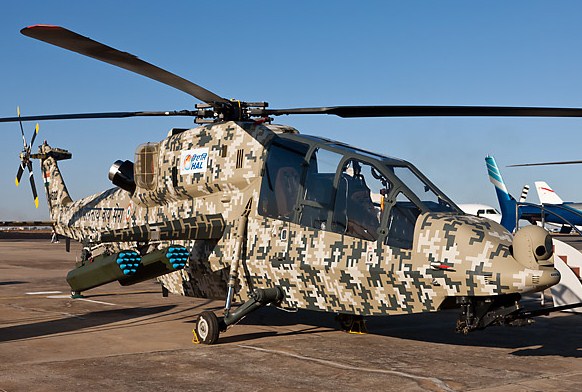Hindustan Aeronautics (HAL) expects the order book for its light combat helicopter (LCH) to swell to about 250, even as the country's armed forces look to desperately add teeth to its largely-obsolete attack chopper fleet.
"We are looking at around at an order book of 200 to 250 helicopters overall for the LCH, including orders from the Army and the Air Force," said P Soundara Rajan, managing director of HAL's Helicopter complex.
Already being compared to China's under-wraps Z-10 gunship, the 5.5-tonne LCH will have the Shakti engine, co-developed with French engine-maker Turbomeca, and will be equipped with guns, rockets and missiles for anti-tank and counter-insurgency attacks. It is expected to enter service by 2015-16.
HAL already has a firm order for 180 of these helicopter gunships from both the Indian Army and the Air Force. Currently, the army does not operate any attack helicopters in its aviation wing and depend on the IAF for operational use. "We are in talks with the Army and expect some movement," Soundara Rajan said.
The armed forces' desperate need for the gunships, especially those that could be operated at high altitudes, was keenly felt during the Kargil conflict, which was fought in the Himalayan region, regarded as the most hostile battle environment in the world.
At present, the army has two squadrons of Mi-25 and Mi-35 attack helicopters and Mi-17 medium-lift choppers of the IAF for testing its transformational concepts. Soundara Rajan also confirmed that the Bangalore-based defence undertaking had already incorporated a number of design improvements on the two current LCH prototypes, including work on the breakaway fuselage, and expected to conduct the sea-level trials on the same by the end of the current year.
"Two prototypes are currently undergoing improvements and will fly shortly. We also have to do what we call the breakaway fuselage. The third prototype will be made after some more flying of the first two. We expect to hold the sea-level trials for the first two prototypes probably towards the end of this year," Soundara Rajan said.
According to him, the entire load spectrum is simulated on the ground. The aircraft is then taken apart to see whether the intended design parameters are behaving exactly the way they should.

No comments:
Post a Comment